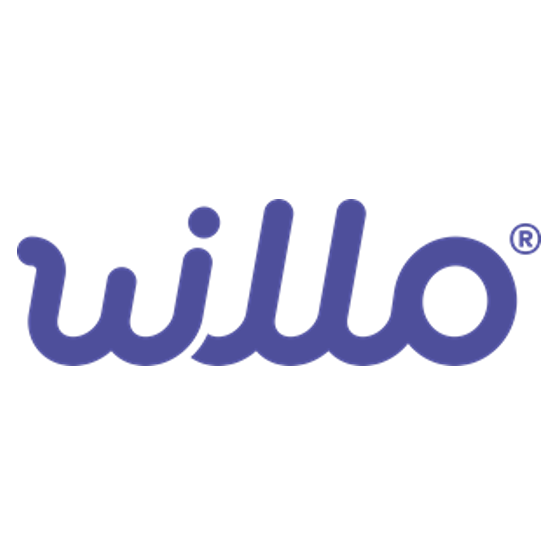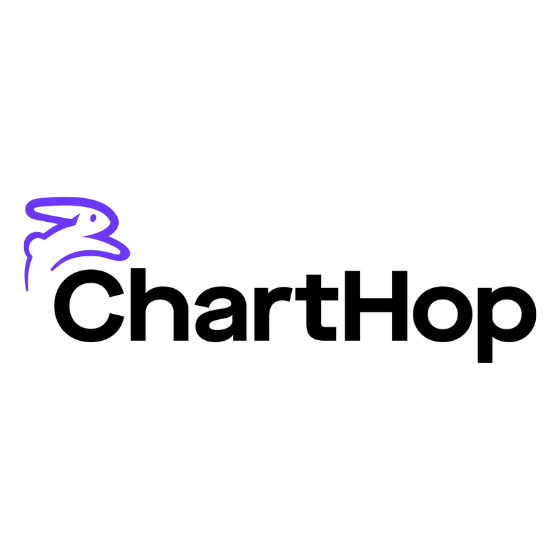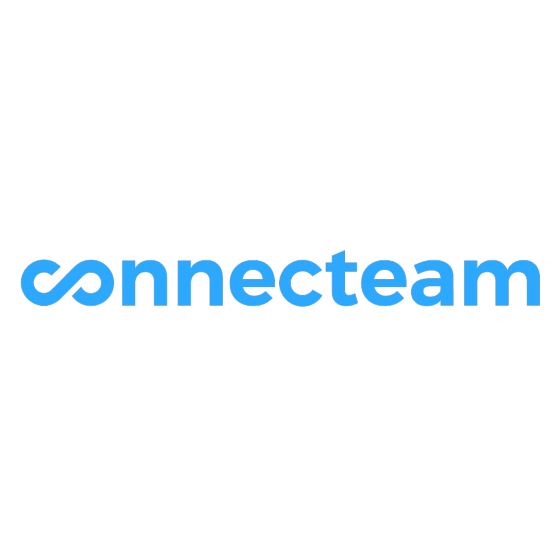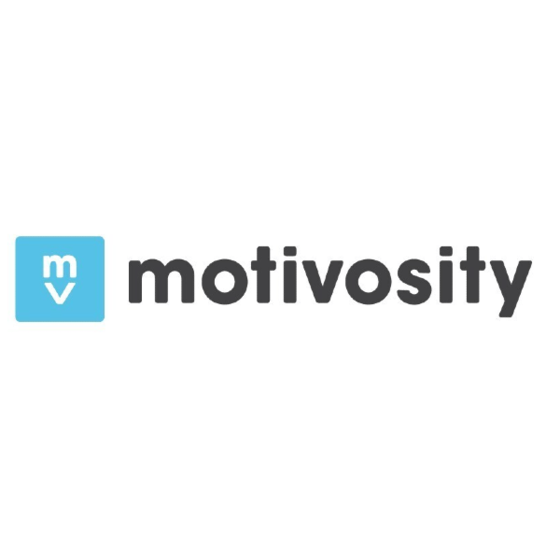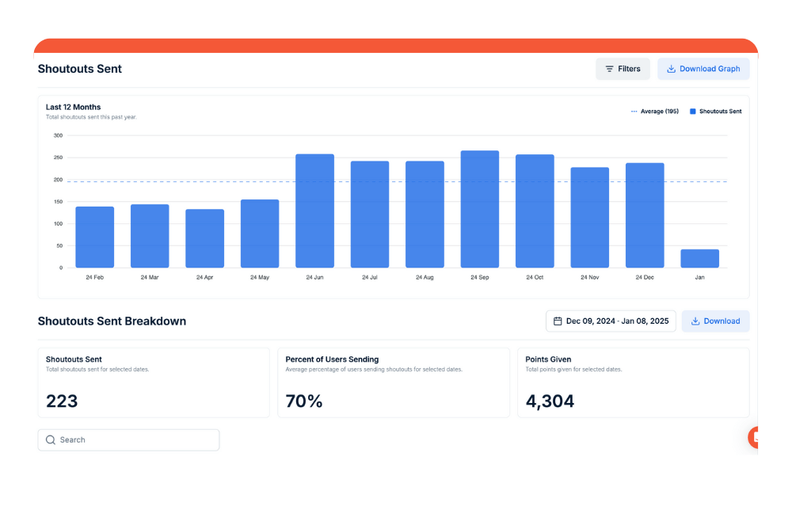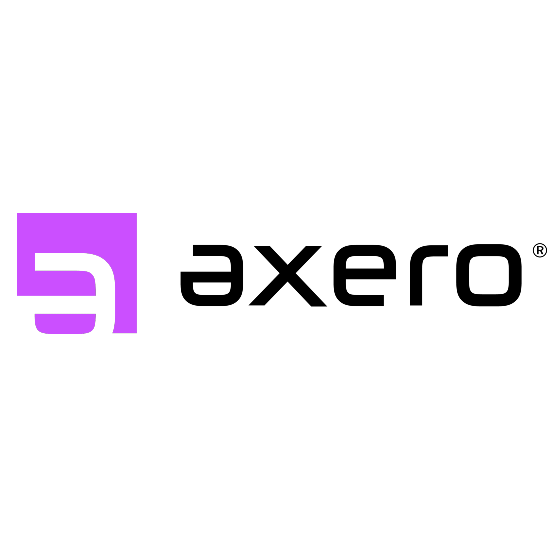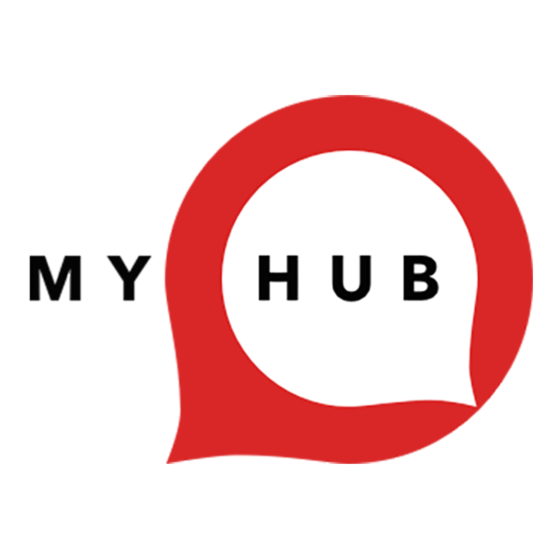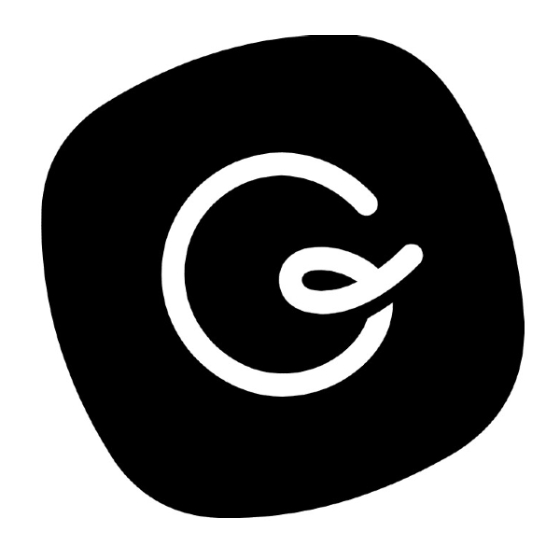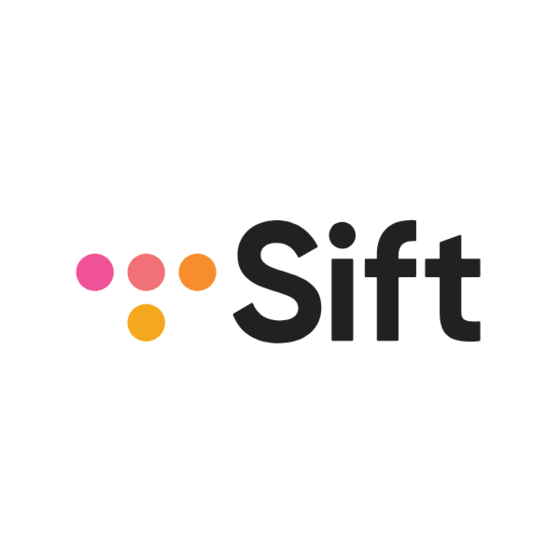10 Best Intranet Software Solutions List
Here's my pick of the 10 best software from the 30 tools reviewed.
The best intranet software helps organizations create a centralized, digital workplace that keeps teams aligned, engaged, and informed—whether they're working in the office, remote, or hybrid.
If you're still relying on clunky spreadsheets, scattered email threads, or outdated platforms to manage internal communication, document sharing, and company culture, you're likely feeling the pressure to find a more modern, streamlined solution.
In this guide, I’ll share my top picks for intranet platforms that simplify communication, make resources easy to find, and improve collaboration across departments—all based on firsthand research, years of analyzing the HR tech landscape, and nine years working in HR directly, including managing intranet documents.
What is Intranet Software?
Intranet software is a secure digital platform organizations use to centralize internal communication, resources, and collaboration tools. It helps teams share updates, manage documents, and access company knowledge in one place.
HR professionals and team leads use intranet platforms to streamline communication, reduce information silos, and improve employee engagement—especially across remote and hybrid teams.
-

Rippling
Visit WebsiteThis is an aggregated rating for this tool including ratings from Crozdesk users and ratings from other sites.4.8 -

Willo
Visit WebsiteThis is an aggregated rating for this tool including ratings from Crozdesk users and ratings from other sites.4.8 -

ChartHop
Visit WebsiteThis is an aggregated rating for this tool including ratings from Crozdesk users and ratings from other sites.4.3
Best Intranet Software Reviews
Here’s a brief description of each employee intranet software solution to showcase each tool’s best use case, plus some noteworthy features, and screenshots to give you a snapshot of the user interface.
Haystack is an intranet software that gives your team one place to connect with knowledge, resources, and people across your organization. Instead of scattered files and disconnected systems, it brings everything together in a central hub. This makes it easier for your employees to stay aligned and find the information they need without wasting time searching.
I picked Haystack because of how it handles knowledge discovery. With enterprise search and a connected knowledge base, you and your team can locate resources in seconds, whether that’s a company policy, a project update, or a process document. This reduces confusion and keeps everyone on the same page.
Another reason I chose Haystack is its directory, which makes it simple to understand who’s who in your company. Each person has a detailed profile, and the directory even offers features like a global map view to see where colleagues are located. This helps you connect with the right people quickly and breaks down silos that often form as organizations grow.
Haystack also brings features that support consistent communication and culture. It includes universal search across different content sources, a company glossary to align on language and acronyms, and built-in recognition tools for celebrating contributions. These elements make your intranet more than just a storage space by creating a place where employees feel engaged and informed.
Other helpful features expand its value even further. You’ll find emergency alerts for urgent communication, secure delivery for sensitive updates, and events management to keep schedules visible across teams. The platform also offers mobile apps, a freshness engine to surface timely content, analytics, group pages, modular design, custom branding, configuration options, news distribution, and content targeting.
Some integrations include Google Workspace, Okta, Workday, Slack, Confluence, and Microsoft 365.
Best mobile-first intranet software to connect distributed team members
Connecteam is an all-in-one app that helps teams stay connected and productive. It allows users to create digital workspaces with various tools that help them manage their daily tasks more efficiently. Teams can easily share information and collaborate on projects in real time, making managing and organizing workflow much easier.
Using Connecteam can help you save time by streamlining the communication process with team members or tracking progress on tasks or projects. It helps reduce costs by automating attendance tracking or employee onboarding processes that would otherwise require manual labor or third-party services.
Additionally, since all data is securely stored in the cloud, you can keep confidential information worry-free and reduce overhead costs associated with physical storage space.
Connecteam enhances organizational culture by providing employees access to the latest company updates or policies without searching multiple sources for answers, making them feel more connected to the organization.
The app includes data analysis capabilities that help you gain insights into how employees are performing across different departments or geographic locations. This data can inform decision-making around personnel management, resource allocation, and project planning.
Its features include forms, mobile access regardless of location, task management tools, time-tracking applications, HR automation services, and payroll integrations.
Integrations include Paychex, Xero, Gusto, QuickBooks Payroll (online + desktop), Google Calendar and others.
Motivosity is an employee engagement platform designed to enhance internal communication and foster a positive workplace culture. It offers tools that encourage peer recognition and promote better information sharing among team members.
Motivosity offers an announcements and highlights feature that allows you to share important updates and celebrate achievements within your organization. This ensures that everyone stays informed about company news and individual accomplishments, promoting a sense of inclusion and recognition.
Additionally, the company and employee spaces provide dedicated areas for departments or groups to collaborate and communicate effectively. These spaces facilitate focused discussions and resource sharing, enhancing team cohesion and productivity.
You can also consolidate all types of communication, from CEO blogs and company newsletters to policy updates and announcements. This consolidation makes it simple for employees to find essential information without navigating multiple channels, ensuring critical updates reach everyone and encouraging a more informed and connected team.
Another valuable aspect is the social feeds and profiles feature, which creates a social media-like environment where employees can interact, share updates, and recognize each other's contributions. This fosters a community atmosphere and encourages open communication across all levels of your organization.
Integrations include Microsoft Teams, Slack, Azure AD, BambooHR, Workday, and UKG Pro.
PeopleOne is a modern intranet solution that brings workplace culture to life, enhanced by integrating with Microsoft Teams. Built on SharePoint, PeopleOne serves as the unified communication and engagement platform for organizations aiming to build a high-performance culture.
HR and leadership teams can send important announcements, events, policy changes, and leadership updates to every employee on the PeopleOne web or mobile app, whether they're desk-based, remote, or frontline.
With the new Microsoft Teams integration, employees can also access these updates directly within the Teams environment, ensuring seamless communication. PeopleOne also provides actionable insights on engagement levels at both the department and employee levels, helping you measure and improve employee engagement.
Employees can easily search and connect with colleagues through the employee directory. Features like Kudos, Discussion Forums, and Idea Management foster meaningful and productive conversations.
Furthermore, collaboration is simplified with SharePoint's document management capabilities, allowing employees to search for documents, share them with colleagues, and work together effectively.
PeopleOne allows for full customization of colors, logos, and themes to align with your brand guidelines, creating a strong sense of association for your employees. Built-in themes for different occasions and festivals also add a festive touch, bringing holiday cheer to the workplace.
Security is also a top priority with PeopleOne, offering role-based permissions to control access to posts and modules. All data is securely stored in SharePoint Online within your organization's own tenant, ensuring your sensitive information remains protected. The platform also supports custom workflows, enhancing organizational efficiency.
With its web, iOS, and Android apps, and now with Teams integration, PeopleOne helps teams communicate, collaborate, and engage anytime and anywhere. It also supports custom and third-party integrations, making it a versatile tool for any organization.
Nectar is an employee recognition platform with internal communication tools that allow teams to create and distribute engaging messages across multiple channels, ensuring that important information reaches all employees effectively.
Nectar's drag-and-drop builder allows you to craft visually appealing announcements without any design expertise. This feature lets you share company updates, event invitations, or policy changes in a way that captures your team's attention and reinforces your brand identity.
Additionally, Nectar supports scheduling and sending messages via text, email, Microsoft Teams, and its own platform, ensuring your communications reach employees on their preferred channels. This flexibility helps keep your team informed and engaged, regardless of their location or device.
You can also coordinate across teams to ensure announcements are timely and targeted, segment users, and schedule broadcasts to reach the right audience without overwhelming them. Nectar even provides analytics to track engagement metrics like open rates and top-clicked content.
Other features include the ability to facilitate employee recognition through shoutouts, enabling team members to acknowledge each other's contributions with points and badges.
Automated celebrations are integrated with HR systems to ensure that employee birthdays and work anniversaries are never missed. Custom challenges can also be created to align with company-specific initiatives.
Integrations include Slack, Microsoft Teams, Google Workspace, Bamboo HR, Workday, Microsoft Outlook, Microsoft Azure, ADP Workforce Now, Paylocity, Rippling, Namely, and Netsuite.
New Product Updates from Nectar
Nectar elevates internal comms & shoutouts analytics
Nectar rolls out two major updates this week: an enhanced internal communications experience and a powerful new Shoutouts analytics report to boost engagement and recognition across your team. Visit Nectar's official site for more.
Axero
Best intranet software for strong content management features and customizable team Spaces
Like many other intranet systems in this list, Axero’s intranet software has all the tools necessary to create a single source of connection and knowledge sharing for teams of any size. Their platform supports internal news announcements, instant notifications, and daily or weekly digest emails.
To ensure high-impact communications, content creators can flag items as Required Reading, causing the system to send automatic reminders until it’s marked as read. Their intelligent analytics also measure the reach of each communication, as well as the sentiment and impact of each post.
One helpful feature from the content perspective is the ability to add expiration dates to any type of posted content. This helps keep the intranet space fresh and up-to-date, instead of becoming an endless dumping ground for content, like so many intranets do. As the expiration date approaches, the system will notify the author to decide if the content should be kept and refreshed, or removed entirely - or you can automate those settings when you post it.
Another feature that stood out is the system’s ability to host Spaces and Sub Spaces for specific groups of people, be it a department, a committee, or a project-specific team. This also helps to reduce clutter in the intranet by designating spaces with a specific focus.
Permissions and access-levels for spaces can also be controlled as needed, ensuring those who need the information have access to it, without unwanted viewers.
Axero integrates with 35+ common software platforms including Google Workspace, Microsoft Office 365, Slack, Zoom, Unsplash, Twilio, Splunk, Rocket.Chat, Jitsi, ELGG, SASSPASS, Salesforce, WordPress and others. They also have a full-feature Android and iOS mobile app.
MyHub
Best company intranet software for IT, HR, and marketing professionals
MyHub is an all-in-one intranet software that is non-techy and actually fun to use. Their automatic workflows are particularly unique in this space—you can improve processes and save time with automated request and approval forms. They also have everything you would expect from a standard intranet software, as well.
MyHub lets you quickly create a beautiful intranet that will transform the way employees connect to information, processes, and each other.
With MyHub, benefit from modern intranet features such as pre-built templates, chat, newsfeeds, forums, blogs, calendars, document storage, automated forms, social network, staff directories, alerts and notifications.
Integrations include Microsoft Office 365, Google Workspace, and other apps.
Hub is a smart social intranet software and client portal that enables SME teams to connect and collaborate on different projects, securely share data, and streamline workflows. They also offer extensive customer support for businesses to get started.
The Hub helps boost engagement and increase efficiency by providing an intranet platform that is tailored to the specific requirements of individual companies and organizations. It features a user-friendly interface and offers a quick 48-hour setup with free upgrades for life, and everything is hosted through a secure Google Cloud service.
It's a feature-rich collaboration solution that includes unlimited hub communities, customizable user permissions, unlimited themes, instant chat and email services, a contact directory, and automated custom alerts, just to name a few.
Users can also gain valuable insights into the health and well-being of their employees, as well as gather important user information and feedback from staff members through regular surveys, workplace polls, and digital forms.
Another standout aspect of Hub is the fact that it champions sustainability and will plant 50 trees for each new Hub sold, with a focus on community-based reforestation projects that support communities affected by climate change.
Integrations are available with numerous single sign-on (SSO) providers, including Azure Active Directory, Google, Office 365, Okta, and OneLogin, as well as with Google Analytics, OneDrive, and popular social media and digital news outlets.
Guru is a cloud-based knowledge management and internal communication tool designed to centralize company information and foster real-time collaboration among team members.
Guru's Intranet capabilities are centered around creating a dynamic and interactive digital workspace that enhances internal communication and knowledge sharing within an organization. It provides a centralized hub where employees can access company information, documents, and resources, fostering a culture of transparency and collaboration.
The platform's robust knowledge management system allows for the efficient organization, storage, and retrieval of information, ensuring that employees always have access to the most up-to-date and relevant content.
Standout functionality in Guru lies in its user-friendly interface and the ability to create a personalized experience for each user. The platform's design is intuitive, making it easy for employees of all tech-savviness levels to navigate and utilize its features effectively.
Guru also offers robust analytics and reporting tools, giving managers and team leaders insights into how the platform is being used and how knowledge is being shared within the organization.
Features include advanced search capabilities, customizable dashboards, secure data storage, real-time collaboration tools, knowledge management, AI-powered suggestions, robust analytics and reporting, integration with multiple platforms, personalized user experiences, mobile accessibility, document management, workflow automation, social networking features, and multilingual support.
Integrations include Google Chrome, Google Workspace, Slack, Microsoft Teams, Gmail, Outlook, HRIS solutions, YouTUbe, Vimeo, Loom, Airtable, Sendesk, Salesforce, Intercom, Freshworks, Confluence, and more. Plus, you can use Zapier, Workato, or their custom API to connect more tools.
Sift is a dynamic organizational tool designed to enhance connectivity and productivity within your team. It combines interactive org charts, rich employee profiles, and people analytics to help you understand your team’s structure and connect with the right colleagues.
I chose Sift for its people-first approach to intranet design. It acts like a lightweight alternative to traditional intranet tools, but stands out for its intuitive search and navigation. You can quickly find colleagues by name, skill, title, or location, and easily explore reporting lines and team structures. It’s especially useful for uncovering internal expertise and surfacing contributions that may not be immediately visible in static directories.
Sift includes analytics capabilities that give you insights into employee relationships and contributions. This feature can help your team make data-driven decisions and improve collaboration, ensuring that your data is always current, which is crucial for maintaining an efficient workflow.
Features include Interactive org chart, skill-based search, employee profiles, contribution analytics, and team insights.
Sift integrates with Microsoft Teams, UKG Pro, Azure AD, Google Workspace, OKTA, Ping Identity, and more.
Best Intranet Software Solutions: Comparison Chart
This comparison chart summarizes pricing, trial, and demo details for my top intranet software selections to help you find the best option for your budget and business needs.
| Tool | Best For | Trial Info | Price | ||
|---|---|---|---|---|---|
| 1 | Best for unified knowledge access | Free demo available | Pricing upon request | Website | |
| 2 | Best mobile-first intranet software to connect distributed team members | 14-day free trial + free plan available | From $29/month (for up to 30 users, billed annually) + $0.5/user/month for each additional user | Website | |
| 3 | Best for internal recognition and rewards | Free demo available | From $2 to $5/user/month ($3,000/year minimum) | Website | |
| 4 | Best modern intranet solution for Microsoft 365 users | Free trial available | Pricing upon request | Website | |
| 5 | Best for crafting engaging announcements | Free demo available | From $3/user/month | Website | |
| 6 | Best intranet software for strong content management features and customizable team Spaces | 14-day free trial | From $10/user/month | Website | |
| 7 | Best company intranet software for IT, HR, and marketing professionals | 14-day free trial | From $1,300/year for 50 users | Website | |
| 8 | Best intranet with all-in-one feature package | Free demo available | Pricing upon request | Website | |
| 9 | Best Intranet software solution with AI-driven enterprise search | 30-day free trial | From $18/user/month | Website | |
| 10 | Best for people-first approach | Free trial available | From $1.50/user/month | Website |
Other Employee Intranet Software
Here’s a few more employee intranet software options that didn’t make the top list:
- Workvivo
Social intranet solution with collaborative Spaces for deeper employee engagement
- Blink
Mobile-first intranet solution for frontline or deskless workforces
- Empuls
Social intranet software for peer-to-peer recognition
- Jostle
For a dynamic employee directory and efficient document management features
- Happeo
Intranet solution for customized news feeds and engagement tools
- Igloo
Digital workplace platform with pre-built solution templates for business challenges
- Noodle
Intranet software with SaaS and on-premise offerings
- ThoughtFarmer
Intranet solution for gamified engagement and flexible data collection forms
- Unily
Enterprise-level employee experience platform with communication, knowledge management, and extranet features
- Interact Software
For personalized content delivery
- Simpplr
Modern intranet software for prescriptive analytics and a dynamic people directory
- Eleviant Tech
Mobile and web-based intranet solution built for Microsoft 365 users
- IntranetPro
Employee intranet solution for sharing documents via Microsoft 365 and SharePoint
- Assembly
All-in-one intranet and employee communication platform for your people and tools
- OnSemble
Intranet software for customer-oriented/service-oriented company cultures
- Interact
Intranet platform that merges social features with a mobile intranet and extranet capabilities
- Staffbase
Digital workplace communication hub with deep analytics tools
- Bitrix24
Intranet platform for collaboration, task management, and unlimited users
- Claromentis
Intranet software with a unique Audit Management module for managing ISO 9001:2015 requirements
- Jive
Intranet software with an embedded machine learning framework for advanced user insights
Selection Criteria For Intranet Software
Wondering how I selected the best intranet software solutions for this list? Here’s a summary of the evaluation and selection criteria I used to create this list:
Key Features
The best intranet software should function as a single source of information for your organization. Here are some common features you can expect to find in the most effective intranet software solutions, which I assessed in fine detail:
- Communication streams: Intranet systems should have communication functions like company news feeds, announcements, instant messaging, and individual or team chat streams.
- Social engagement features: To foster engagement, many systems now incorporate rich social features like shout-outs, engagement polls, “like” buttons on posts, and emoji-supported reactions.
- Document collaboration tools: Document owners should be able to author new documents directly in the platform, or link them easily to existing document repositories. Beyond that, many systems include features to facilitate collaboration like tagging colleagues to review certain documents or sending them tasks to complete or approve.
- Content management features: This includes content-specific features like marking messages as mandatory reads or resending content to users who didn’t read it, which ensures everyone is on the same page.
- Knowledge sharing: This can take many forms, but employees should be able to easily access key corporate documents from within your intranet system. Some systems also support more focused information sharing through subsites or topic-based information wikis within the platform.
- Analytics: Understanding the granular details of how employees are engaging with your intranet platform will help you spot gaps in your content and tailor future corporate communications to what employees care about the most.
- Workflow tools and forms: Intranet software should be a one-stop shop, meaning key process requests like ordering business cards or requesting a hotel booking should also be doable within the platform, with built-in approval functions for extra efficiency.
- Interactive and/or dynamic employee directories: Especially in large organizations, the ability to search a company directory or organizational chart based on location, department, or special skill sets is a valuable way to boost productivity and collaboration. Bonus points if you can click through to start a direct chat with the team members you find too.
- Mobile app accessibility: Often workers are on the go, so it’s important that intranet software is fully accessible from mobile devices as well, with full-feature mobile apps always preferred.
User Interface (UI)
I appreciate intranet systems with clean, simple design approaches that are not too busy or chaotic and are intuitive to use. Your staff should be able to find key elements with ease, such as your people directory, knowledge library, or other corporate reference documents. I also gave bonus points to platforms with customizable homepages at the individual user level.
Usability
I prioritized intranet software with a clear navigation structure in place to help users quickly and easily find the information they need without going down rabbit holes. To assess this, I took a careful look at each system's menu design to ensure all the key features were within easy reach, creating a better user experience.
Software Integrations
Integrations with other commonly used systems are important so users don’t have to leave the platform to find what they need. For intranet solutions in particular, integrations that add a lot of value include document management systems (e.g., Google Workspace, Microsoft Sharepoint, and others), email systems, and other tools for employee engagement and recognition you may be using already.
Value for Price
Transparent pricing models are always appreciated. Since some intranet software is modular by design, pricing is only available upon request since the cost will depend on the modules you need. However, most software vendors do still provide detailed information explaining which features are available in each of their plans, so you can get a sense of how robust their offering is, or not.
I also recommend taking advantage of a free trial first, before you commit to a contract. That way, you'll gain a realistic sense of how successful the intranet software will be before you role it out to your wider team.
FAQs about Intranet Software
Here are some answers to frequently asked questions you may have about intranet software and how it works:
How do I choose the right intranet software for my organization?
Start by outlining your team’s unique communication, collaboration, and document management needs. List your must-have features, such as easy file sharing, news publishing, or employee directories. Compare several intranet platforms, focusing on usability, reliable customer support, and strong integration with your current systems. Read reviews from other HR managers and internal comms professionals for real-world insights. Request live demos or trial access, and involve both IT and end users in the evaluation process to see which software feels most intuitive and robust for your team.
What are the most common challenges when implementing intranet software?
The biggest challenges usually include low user adoption, unclear stakeholder goals, data migration headaches, and difficulty tailoring the platform to match your organization’s culture.
To tackle these, set clear objectives upfront, secure leadership support, and communicate consistently with employees about the benefits. Plan comprehensive onboarding and provide ongoing training sessions. Appoint internal champions from different departments to encourage participation, and gather feedback so you can fine-tune the rollout.
Strong IT and HR collaboration helps address both technical and change management issues.
How can intranet software improve employee engagement and communication?
Intranet software acts as a central hub for news, corporate updates, and resources, helping employees feel informed and included. Features like social feeds, polls, shout-out boards, and discussion forums empower staff to share feedback and connect with colleagues. Many platforms include event calendars, recognition programs, and tools for peer-to-peer networking.
For HR and internal comms leaders, these functions enable a vibrant, transparent dialogue and ensure everyone has access to important information regardless of location. Over time, you’ll see increased engagement, improved morale, and better alignment across teams.
Can intranet software integrate with other workplace tools like HRIS or Slack?
Yes, nearly all modern intranet platforms offer deep integration with popular workplace tools. That includes HR information systems (HRIS), communication apps like Slack or Microsoft Teams, project management platforms, and document storage services such as Google Drive or SharePoint.
Ask vendors for a list of built-in integrations or about the availability of open APIs for custom connections. Seamless integration allows employees to access everything from one portal, reduces data silos, and automates common HR or comms tasks—making daily work simpler for everyone.
What security features should I look for in intranet platforms?
Prioritize platforms with robust security essentials: role-based access control, multi-factor authentication, data encryption in transit and at rest, and options for single sign-on (SSO). Make sure the software provider keeps up with regular security updates and vulnerability patching.
For HR and internal communications use, granular permission settings are crucial to safeguard sensitive data like personnel files or company announcements. Also, check if the platform complies with privacy standards such as GDPR or HIPAA, based on your needs, and ask about auditing and reporting tools for added peace of mind.
Other Communication Software Reviews
With intranet software already on your mind, you may be interested in learning more about other types of internal communication software too. To save you hours of searching, take a look at some of my other specialty software lists instead:
- Employee Communication Software
- Employee Engagement Software
- Team Communication Apps
- Employee Recognition Platforms
- Remote Collaboration Software
- Remote Working Software
Next Steps
If you made it this far, I hope you’ve gained a more thorough understanding of how the right intranet software solution can transform your business. In case you’re still craving more details, take a look at our best practices for developing an employee intranet.
Already have an intranet you like? We have a list of the best learning management systems if you're trying to amp up your internal training and employee development.
Lastly, before you go, I’d love it if you subscribed to our People Managing People newsletter. By signing up, you’ll gain access to our latest and greatest content covering HR leadership and organizational development.



